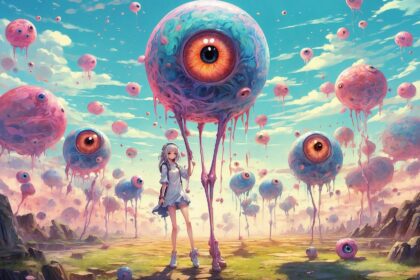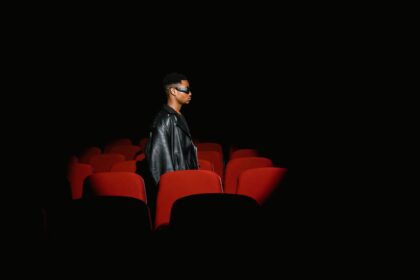Hello, fellow dream enthusiasts and midnight snack lovers! Have you ever found yourself pondering the mysteries of the universe in the peaceful silence of the night? You’re not alone! Today, we’re exploring the fascinating world of dreams and contemplating whether our reality might be an ongoing, continuous lucid dream. So buckle up, fellow dreamers, as we embark on an adventure through a whirlwind of slumbering thoughts, conscious curiosities, and twilight reflections!
To begin our journey into the dream realm, let’s first recap lucid dreaming. So imagine a typical dream, but with a twist: you’re aware that you’re dreaming, and you even have control over the narrative! Lucid dreaming usually occurs during REM sleep, when your brain activity is at its peak. Sounds incredible, doesn’t it?
So this brings up a question: Could it be that we’re living our lives as ever-alert, conscious lucid dreamers?
Some thinkers suggest that we’re constantly immersed in a dream state. They argue that our brains create our reality by synthesizing sensory inputs and adding a touch of personal bias and perception. It’s as if each of us wears our own VR headsets, experiencing the world from a unique and personal perspective!
Others suggest that we occasionally encounter a “dreamlike state” while awake. You know, when life feels surreal or reality appears as flexible as bubble gum? This state can emerge during intense stress, exhaustion, or even extreme happiness. However, unlike lucid dreaming, we do not always feel like we’re in control of this dream-like state, which makes it all the more fascinating and puzzling. At times, it’s so perplexing that we might feel the urge to pinch ourselves just to check if we’re actually dreaming or not.
One intriguing example of the blurred lines between dreams and reality is the phenomenon of déjà vu. Have you ever experienced that unsettling feeling of having lived a moment before but not being able to recall when or how? Some researchers believe déjà vu could result from a glitch in our memory processing. In contrast, others think it might be our brains being overly creative, attempting to rationalize a situation that seems both familiar and strange. Regardless of the cause, déjà vu exemplifies how our brains can make our reality seem dreamlike and enigmatic.
Adding to the complexity of this fascinating discussion is the phenomenon of “shared dreaming” and its potential implications for our understanding of reality. Shared dreaming occurs when two or more people report having the same or very similar dreams, as though they were participating together in the same dream scenario. This intriguing concept raises questions about the nature of dreams and their possible connection to our perception of reality. If such shared experiences can indeed occur within the realm of dreams, it further blurs the line between our dream worlds and waking reality, challenging our understanding of the distinction between the two.
But hold on! The scientific community has not found any concrete evidence to support these captivating ideas. While our perception of reality can sometimes be peculiar, there’s no indication that we’re navigating our daily lives like lucid dreamers.
Let’s face it, if we were all wandering through an endless lucid dream, our world would be chaotically unmanageable, right? Imagine trying to converse with someone whose reality is drastically different from yours. Moreover, constantly questioning what’s real and what’s not could strain our minds, possibly affecting our mental well-being.
More importantly, factors such as our experiences, culture, and social interactions actively shape and evolve our perception of reality over time. If we were all trapped in a continuous lucid dream, it’s hard to believe we could adapt and learn from our surroundings as we do when awake and conscious. Our ability to grow, change, and make sense of the world would be significantly limited if we were confined to an eternal dreaming state.
From a neurological perspective, we see further distinctions between dreams and reality. Our brains display unique patterns of activity while dreaming that significantly differ from those during wakefulness. These differences in brain activity make it highly improbable that our waking lives are merely an extension of our dreams, further emphasizing the separation between the two states.
Exploring the enigmatic world of lucid dreams and their relation to our waking experiences is an enthralling and continually evolving field of research. As we delve deeper into the mysteries of the mind and consciousness, who knows what astonishing discoveries await us in this fascinating quest?
Studying lucid dreams also provides insight into the workings of our subconscious mind, which is involved in shaping our thoughts, emotions, and behaviors. By uncovering new aspects of our inner selves through the exploration of lucid dreaming and gaining a better understanding of the interplay between our conscious and subconscious minds, we may find that even more captivating questions arise. This ever-expanding knowledge helps us better comprehend ourselves and our surroundings while embracing the endless possibilities for growth, change, and self-discovery. Through this journey of unlocking the secrets within our lucid dreams, we continue to make strides in understanding the complexities of the human mind.
In conclusion, while the idea of our reality being one immense lucid dream may captivate our imaginations, there’s no scientific evidence to back it up. Our brain may be the director of our individual reality performances, but that doesn’t mean we’re all dwelling in personalized dream worlds. Our experiences, memories, and neurological patterns all illustrate a clear distinction between our dreams and waking lives.
I personally believe that our reality is more of a dream-like state. Our experiences in the waking world are often just as strange and illogical as our dreams, and it is often difficult to tell the difference between the two. For example, when we have non-lucid dreams, they seem completely real, and we only realize we were dreaming when we wake up. Similarly, we often have experiences in the waking world that seem strange or surreal, and we only realize they were real in retrospect.
I would also suggest that the distinction between dreams and reality is a matter of perspective. When we are dreaming, we believe that our dream world is real. When we are awake, we believe that our waking world is real. And since our minds create both worlds, we cannot know for sure which one is more real or “really real.”
So, venture forth, intrepid explorers of the mind! Embrace the wonders of your dreams and the incredible possibilities they offer. Let your curiosity guide you on this amazing journey into the depths of human consciousness. And remember, while our reality may or may not be one expansive lucid dream, the world is still an extraordinarily magical place, filled with endless opportunities for adventure, growth, and discovery.
Now, go catch some Z’s, set off on an amazing dream journey, and allow your imagination to reach new heights!








